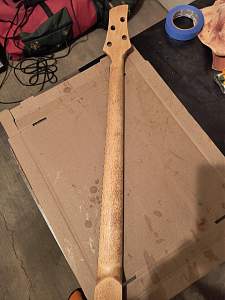I followed the instructions for using the polymerized tung oil on the neck that I found on Highliner Guitars's Youtube video. I did a very light staining in cherry (first photo), and then sanded it down to only leave the grain. Initially, I thought I'd made a huge mistake by not putting a coat of sanding sealer on first, but I now like the look of the speckled clusters of grain that really came out. The second photo is after the 5th coat of oil.







 Reply With Quote
Reply With Quote




